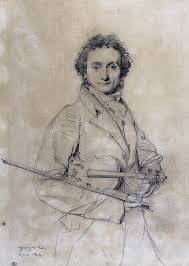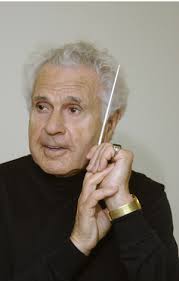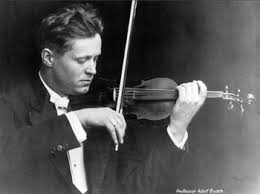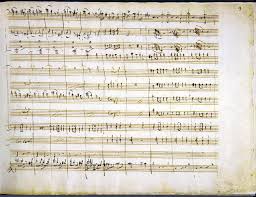
It’s a simple and catchy melody…so memorable and ripe for development that, for over 200 years, composers haven’t been able to stop using it as the inspiration for an unending stream of variations. Set in A minor, the theme of Niccolò Paganini’s Caprice No. 24 bounces between tonic and dominant (scale degrees I and V), before entering a downward sequence which brings the melody home. A series of variations follow, which almost push the violin, and the violinist, to their limit.
With Paganini, the age of the dazzling virtuoso rock star was born. Soloists such as Paganini and Franz Liszt became larger-than-life heroes, mesmerizing audiences in Europe’s new public concert halls. Written between 1805 and 1809, Paganini’s 24 Caprices are a series of short, unaccompanied virtuoso miniatures. Each caprice features a unique technical challenge, from flying ricochet bowing, to left hand pizzicato, to fingered octaves and multiple stops. Caprice No. 24 is the collection’s electrifying finale.
Let’s start by listening to the catchy theme and variations which have inspired so many composers. Notice how many far-reaching variations spring from Paganini’s theme and the distinct atmosphere created by each variation. Consider the uniquely fun spirit surrounding a musical theme and variations. It’s as if the composer is saying, “Look what I can do!” Each musical adventure seems to eclipse the last, while, like jazz, it’s all based on the same blueprint or musical DNA.
Here is Caprice No. 24 played by Ilya Kaler:
[unordered_list style=”tick”]
- Find this recording at Naxos.
[/unordered_list]
Liszt’s Grandes études de Paganini
While Paganini expanded the technical capabilities of the violin, Franz Liszt set out to revolutionize piano technique. In 1838 he published a collection of “studies” based on Paganini Caprices. Beyond the obvious virtuoso fireworks, the music exhibits a striking harmonic inventiveness. Listen to the almost demonic fifth variation (1:55), which would sound at home in a contemporary film soundtrack.
Here is Etude No. 6 performed by Jerome Rose:
https://www.youtube.com/watch?v=5r-nfP6QV78
[unordered_list style=”tick”]
[/unordered_list]
Brahms’ Variations on a Theme of Paganini
In 1863 Johannes Brahms wrote his own Variations on a Theme of Paganini, Op. 35. Like Liszt, Brahms intended these variations to be “studies,” focusing on a variety of aspects of piano technique. He presented them in two books.
One of Brahms’ favorite compositional techniques is to shift our perception of the downbeat, causing us to become momentarily “lost”. Listen carefully and you’ll hear fairly shocking examples of this rhythmic complexity (3:31). Brahms also begins to move away from Paganini’s established harmonic blueprint into increasingly adventurous territory (4:55, 7:28, 8:47, 15:11, 20:09). The original motives are fragmented, turned upside down and re-harmonized. Suddenly new and strikingly different melodies and harmonies emerge.
Brahms achieves an amazing sense of drama in this piece. At times, it’s easy to hear distinct characters coming to life in the voices. Listen for conversations which take place between these voices, low and high.
Here is Andrea Bonatta:
[unordered_list style=”tick”]
[/unordered_list]
Rachmaninov’s Rhapsody on a Theme of Paganini
The most famous piece inspired by Caprice No. 24 is Sergei Rachmaninov’s Rhapsody on a Theme of Paganini, Op. 43, written in 1934. Rachmaninov was the piano soloist at the premiere in Baltimore in November, 1934. The Philadelphia Orchestra was conducted by Leopold Stokowski. You can hear Rachmaninov’s 1934 recording here.
Rhapsody on a Theme of Paganini is a musical romp, incorporating all of the fun and virtuosity associated with a theme and variations, but also evoking a wide range of expression. The piece exudes a spirit of humor, from the simultaneously ferocious and comic opening bars, to the sly musical wink at the end. Rachmaninov throws us off guard, first presenting the first variation, a bare bones outline of the theme with the melody stripped away, and then Paganini’s original theme in the violins. In Variation VII the Dies Irae (“Day of Wrath”) chant from the medieval Mass of the Dead emerges (3:29). Composers from Berlioz and Mahler to George Crumb have quoted the Dies Irae, but it seems to have had special significance for Rachmaninov, who returned to it in several compositions.
The famous 18th variation (15:05), which inverts the original theme and transposes it to D-flat major, is one of the piece’s most significant moments. As a musical event, it is set up by the two preceding variations, which gradually take us into a tunnel of darkness and anticipation. Listen carefully to the tension and drama in the inner voices, under the 18 variation’s melody line.
Here is a recording with Nikolai Lugansky and the City of Birmingham Symphony Orchestra:
[unordered_list style=”tick”]
[/unordered_list]
Coda
There are many other pieces inspired by Paganini’s Caprice No. 24. Violinists from Eugene Ysaye to Nathan Milstein have put their own stamp on the music. In addition, listen to variations by Witold Lutoslawski, Benny Goodman, Andrew Lloyd Webber and a recent jazzy composition by Fazil Say.








